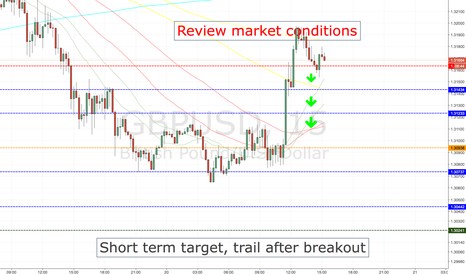Содержание

Before we get any deeper into this subject we need to cover the basics of zoning. Zoning is how the Engineering divides up the building into separate VAV zones, with each zone getting its own VAV box. To keep cost down its best to limit the amount of VAV boxes used, as each box adds additional cost for material, labor, controls and electrical. Keeping VAV systems properly maintained through preventive maintenance will minimize overall O&M requirements, improve system performance, and protect the asset.

If you have any questions, a project, or anything please reach out to us. Nailor SelectWorks software will do all these selections for you while communicating the pressure drops and electrical requirements. By entering the design conditions the software provides several options that would be able to deliver the required variables. With Nailor can provide electric heat in .1kw increments because we make our own elements.
However, published research supporting the efficacy of this approach is scarce. An https://1investing.in/ terminal unit regulates the quantity and temperature of air delivered to satisfy the temperature of a room or space. Indeed, the room sensor could control only a damper or it could control a damper with an airflow sensor.
Induction Units vs Fan Coil Units
VAV box airflow rate commensurate with damper position and within minimum and maximum settings. Static pressure in supply duct and control point for system VFD fan to assure modulation with changing VAV box flow rates. Damper – modulates the airflow based on airflow sensor and zone temperature requirements. Dual ducted terminal VAV box – takes advantage of two ducts to the unit, one hot and one cold to provide space conditioning.
- The use of this strategy is required by Title-24 and ASHRAE 90.1 for system that have DDC to the zone level.
- In this instance, the only real difference would be that the air handling unit operates by bringing in fresh air from the outside, whilst the FCU generally recirculates and conditions the air in the space it serves.
- The reduction in fan energy for the VAV fan coils pushed up the building’s EPC rating from a C to a B.
- The pressure sensor measures static pressure in the supply duct that is used to control the VFD fan output, thereby saving energy.
The air handling unit is designed, once installed and commissioned, to supply fully conditioned air to the multiple zones/spaces in the building allowing much larger loads to be managed than with the FCU. The VAV box has a damper at its inlet moved by an actuator that is controlled by the controller that takes its command from a temperature sensor. When the temperature sensor in the space calls for cooling it sends a command to the VAV box controller which then adjust the supply air flow rate . The adjustment is done by an actuator rotating the VAV box inlet damper either open or closed in increments.
The cooling coil could also be supplied via a Direct Expansion System using refrigerant. If the coil needs to be cleaned, remove the motor/blower assembly and brush the fins. A compressed air system can be used to blow air through the coil fins. If you switch from a purely fossil-fuel burning system to a hybrid heating system, you will be able to reduce your carbon footprint. Friction between the shaft and the bearing needs to be minimized in order to provide high reliability and decrease noise output.
WGI Welcomes Nicholas Evans as VP, Chief Innovation Officer
VAV box reheat call appropriate for conditions and corresponding chiller operating point and reset status. The purpose of this equipment O&M Best Practice is to provide an overview of system components and maintenance activities to keep VAV systems operating safely and efficiently. Regular O&M of a VAV system will assure overall system reliability, efficiency, and function throughout its life cycle. Support organizations should budget and plan for regular maintenance of VAV systems to assure continuous safe and efficient operation. From what you described you are replacing vav’s with fcu’s, and, using the same duct system, that means you will have fcu’s, that are more expensive than vav’s plus the whole hydronic system to supply fcu’s. In such circumstances, fcu’s are much more expensive than vav’s and i am failing to find different view of it if you do not provide more clarifications.
Because there are no sound reasons to select the size 5 unit, the Size 3 with a 10” inlet will work for thermal and acoustical comfort. On the other hand FCU is the equipment used to condition the space it can either be a DX or Chilled water system. The remote AHU will of course use appreciable energy, as will any chiller or boiler plant to heat or cool the air.

The fact that oversized FCUs do not consume any more energy than correctly sized ones “should offer a huge amount of comfort to the engineer,” says Jones. Trox then tested the performance of the prototype units at its Thetford factory. Because the TAS simulation package is based on a component by component hourly plant performance simulation, Jones was able to input the data from the lab tests directly into the modelling package. “We used the actual data to create a performance algorithm for VAV fan coils,” he explains. He admits these algorithms are at an early stage of development, but claims they are of sufficient detail to allow the potential benefits of VAV fan coils to be assessed.
Is a fan coil the same as an air handler?
Some manufacturers accomplish speed control by adjusting the taps on an AC transformer supplying the power to the fan motor. Typically this would require adjustment at the commissioning stage of the building construction process and is therefore set for life at a fixed speed. Other manufacturers provide custom-wound Permanent Split Capacitor motors with speed taps in the windings, set to the desired speed levels for the fan coil unit design. A simple speed selector switch (Off-High-Medium-Low) is provided for the local room occupant to control the fan speed. Typically this speed selector switch is integral to the room thermostat, and is set manually or is controlled automatically by the digital room thermostat.
The VAV controller is also usually wired to sensors that measure pressure, temperature, and humidity at the inlet of the box and to a wall sensor in the zone that is being heated or cooled. A VAV box is considered pressure dependent when the flow rate passing through the box varies with the inlet pressure in the supply duct. This form of control is less desirable because the damper in the box is controlled in response to temperature only and can lead to temperature swings and excessive noise. Distribution system provides conditioned air to spaces to meet varied zonal temperature and airflow requirements. HVAC engineers can choose between CAV and VAV systems depending on the application. While a CAV system uses variable air temperature and constant airflow, a VAV system keeps constant temperature and variable airflow.
And one more thing in general isn’t using FCUs instead of VAV better to save space, material and easier for control. If we choose Unit Size 3 with a 10” inlet, it provides the details of this selection. Fan Coil Unit covers a range of products and will mean different things to users, specifiers, and installers in different countries and regions, particularly in relation to product size and output capability.
However, VAV systems demonstrate superior performance and result in far fewer discomfort from occupants. Constant supply air eliminates situations where terminal boxes are closed waiting for the central system to switch to the right mode. The owner receives the added benefit of energy savings without sacrificing thermal comfort and performance. The use of Variable Air Volume has been shown to save energy when combined with a supply fan VFD’s. As the demand in the spaces fluctuate the VAV box dampers open or close proportionately and the air handler fans respond through various control strategies. Variable air volume systems save more energy than a constant volume system.
🟧 Concealed Horizontal Ceiling Mounted
The amount of primary air entering a certain zone is then controlled with the use of thermostats to adjust the modulating dampers. The fan coil unit will be directly connected to a fresh air source, usually via a louvre and ducting from outside. The FCU is connected to the central heating and central chilled water system simultaneously, using the control valves on each system to provide correct temperatures.
Air handling unit description
System fan coil unit vs vavs – Depending on the age of the system, VAV box controls may be pneumatic, electronic, or direct digital. Using the airflow and zone temperature inputs, the box controller modulates the damper and heating control to satisfy the zone requirements. Airflow sensor – measures the airflow at the inlet to the box and adjusts the damper position to maintain a maximum, minimum, or constant flow rate regardless of duct pressure fluctuations.
At the moment the Building Regulations Simplified Building Energy Model fails to take account of potential energy savings from varying a unit’s fan speed. So the greatest difficulty for specifiers who do not run TAS software, for now at least, will be quantifying those savings. Fan coil units linked to ducted split air conditioning units use refrigerant in the cooling coil instead of chilled coolant and linked to a large condenser unit instead of a chiller.
VAV Zone DrawingThe idea of zoning is to breakdown large areas of a building into smaller zones with similar load profiles. When a zone on the south facing portion of a building is calling for maximum cooling, the north facing zones may be in minimum cooling or heating mode. Zoning allows different spaces the ability to provide cooling or heating and vary the flow depending on the demand of that zone’s temperature sensor.
